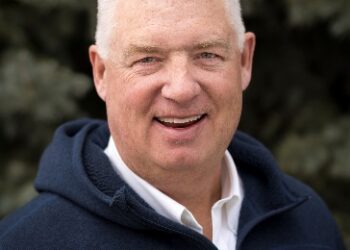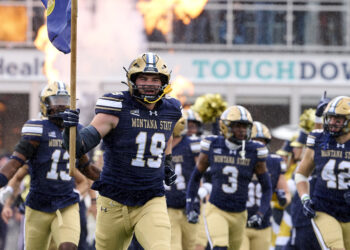by Melynda Harrison
MSU News Service
BOZEMAN –Hurricanes don’t land in Montana, so last fall a Montana State University student sought them out. He was aboard a plane that flew into hurricanes—on purpose. Amin Nehrir, an electrical engineering doctoral candidate at MSU, spent eight to 12 hours a day for three weeks in a DC-8 bouncing around in hurricanes to better understand them and help build better hurricane prediction models.
“It was really loud in there,” Nehrir recalled. “There were air inlets on the sides of the plane, and all the scientific instruments and generators were running.”
And the temperature fluctuated dramatically. Sitting on the ground in Florida in the summer was hot and humid, and the scientists’ soaking shirts would stick to their bodies. When the plane was at altitude it was cold enough to wear heavy jackets.
“It could be pretty miserable,” Nehrir said.
Although it was exhausting and uncomfortable work, Nehrir enjoyed it.
“I kind of liked the turbulence,” he said. “For me it was pretty neat to be working with professional scientists who were doing science right there, instead of on the ground in a lab. I was pretty much stoked the whole time.”
When the pilots turned on the seatbelt sign, everyone strapped into a five-point harness. While the researchers mostly stayed put, there were times when their computers would fly around the plane.
At the end of each flight, a particular instrument needed to be recalibrated, which required some fancy flying. Recalibration required four 45-degree turns and porpoising.
“I could hear people puking,” Nehrir said. “I sat in the back of the plane where you feel the most g-force, and I got pretty woozy the first couple of times.”
Nehrir described the plane as a flying laboratory that took a month to retrofit. The seats were removed, racks to hold instruments were installed, and just enough first class seats to hold each scientist were reinstalled. In addition to the scientific instruments, the researchers held onto laptop computers, which they used to talk to other planes and researchers flying at different levels in the same hurricane, check the weather and communicate with the NASA base in Florida.
Nehrir, who grew up in Bozeman, spent most of his life flipping right past hurricane stories on television. Other than occasional hailstorms, he wasn’t familiar with severe weather before this NASA mission.
The flights were part of Nehrir’s NASA Graduate Student Researchers Program fellowship which included a NASA research experience. At MSU, Nehrir is working on a type of LiDAR, which is similar to radar, but done with lasers, to measure water vapor and aerosols in the atmosphere. It turns out that his differential absorption LiDAR (DIAL) was just what NASA needed to for its hurricane missions.
The DIAL was inside the airplane and shot pulses of laser out through glass windows in the top and bottom of the aircraft. Using this remote sensing technique, Nehrir could collect and process data from the hurricane. Because the instruments would only fly on the plane for this one period, scientists had to accompany their projects to monitor their operation and gather data.
In the plane, Nehrir was surrounded by 30 other scientists all working on different projects related to hurricane research. The plane was piloted by Army and Air Force pilots who flew them into, and through, every hurricane they could get to during the late summer/early fall hurricane season. They took about 15 trips through Hurricane Earl—the long-lived and powerful hurricane that caused $40.8 million of damage to the Leeward Islands and $3.3 million of damage to the Outer Banks, and caused seven fatalities, according to news reports.
“It’s pretty turbid up there. There were computers flying around from time to time.” Nehrir said. “We were bouncing around in the clouds most of the time, but when we flew through the eye it was calm, sunny and awe-inspiring.”
As they flew through hurricanes at 30,000-35,000 feet, Nehrir ran the NASA Langley Research Center’s (LaRC) DIAL as it measured moisture and aerosols—solid or liquid particles in gas—in the hurricane. The data he collected was was coupled with the data of other scientists on board to better understand hurricanes.
“We measured everything from the top of the hurricane to the ocean,” Nehrir said.
Measuring moisture and aerosols helps scientists better understand how clouds are formed and how the earth’s atmosphere is heated and cooled. As the planet’s climate changes, understanding weather and storm systems becomes more and more important in figuring out ways to live and grow food and livestock in a new climate.
According to Nehrir’s advisor and associate professor of electrical and computer engineering, Kevin Repasky, Nehrir’s work has application even in hurricane-free Montana.
“Understanding how rapidly storms grow, how weather systems and precipitation cycles work, and their effects on a changing environment might be of real interest to Montanans,” Repasky said. “Whether you are ranching in eastern Montana or working on the west side of the state, precipitation amounts are important.”
In addition to working on a Ph.D. at MSU, Nehrir received his bachlor’s and master’s degrees, both in electrical engineering, from his hometown university. His father, Hashem Nehrir, is a professor of electrical and computer engineering at MSU.
“I loved skiing and being outdoors and I just didn’t want to leave,” Nehrir said. “I enjoyed the work I was doing with my advisor (Kevin Repasky) and NASA ,NOAA (the National Oceanic and Atmospheric Administration), and NCAR (National Center for Atmospheric Research) were showing great interest in what our group was doing. It made sense to stay.”
Nehrir is part of a remote sensing group at MSU. Remote sensing is the gathering and recording of information about the earth’s atmosphere. Remote sensing techniques include photography, infra-red imagery, and radar from aircraft, satellites, and spacecraft. Nehrir is planning on doing a post-doctoral fellowship with the NASA Langley Research Center’s LiDAR group and developing a similar instrument to measure methane gas in the Arctic. Methane is an important greenhouse gas, trapping 20 times more heat than an equivalent amount of carbon dioxide.
MSU’s remote sensing group has achieved world-wide recognition for developing novel optical sensing technology for application to wide-ranging scientific problems. They have developed optical sensors and used them to explore the earth’s environment.
“The instruments we are developing at MSU, such as the water vapor DIAL being developed by Amin, may play an important role in better weather and climate forecasting,” Repasky said.
The group is working on developing and deploying remote sensing instruments for a variety of applications including trying to better understand the changing atmospheric composition and the resulting radiative forcing effects associated with the atmospheric aerosols, water vapor, and clouds. These radiatve forcing effects and the corresponding climate response are the largest sources of uncertainty in global climate modeling.
“Anyone else would need three to four years of training to get on a NASA mission like this,” Nehrir said. “The work I am doing at MSU provided a nice gateway into the NASA research group. And it overlaps perfectly with what I want to be doing professionally.”













